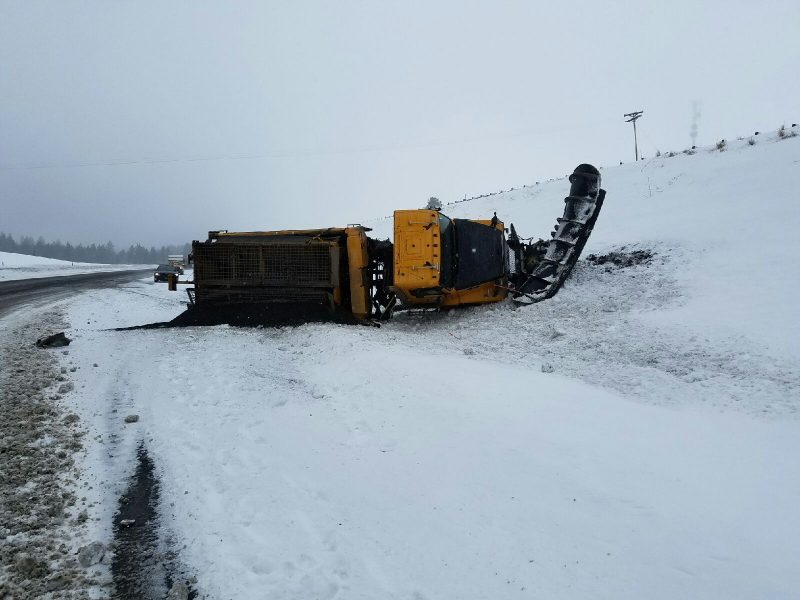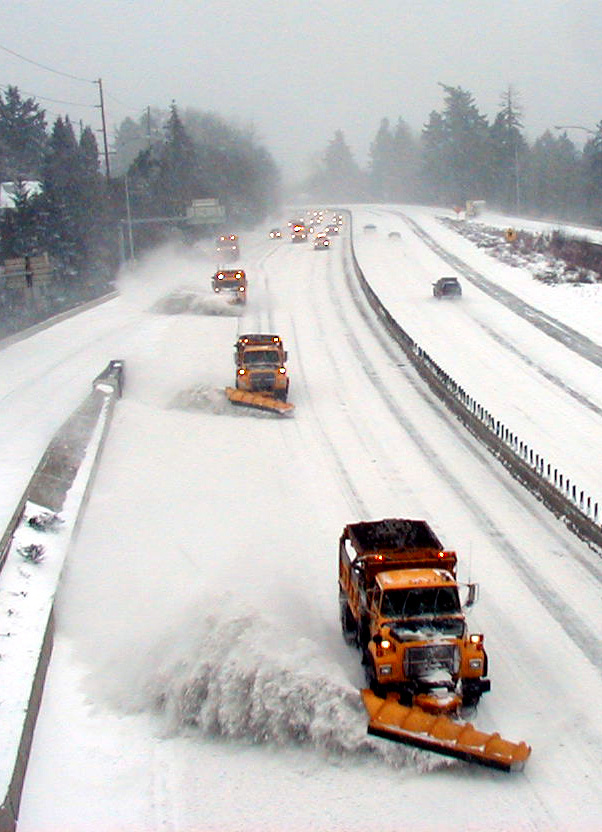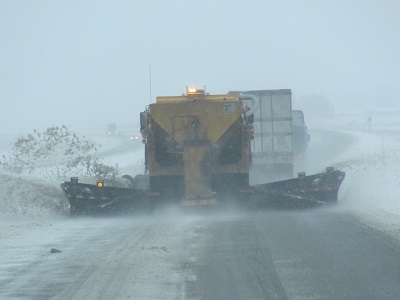
Winter travel requires extra caution around snow plows
posted in Alerts by Brian Gray
Winter travel requires extra caution around snow plows
Courtesy of ODOT Feb 8th, 2017 News Release
Few people will argue that this winter in eastern Oregon is more severe than recent memory, with back to back snow storms, sub-zero temperatures, occasional 80-mile-per-hour winds gusts, and challenging driving conditions throughout the area.
For the Oregon Department of Transportation an increase usage of sanding rock, chemical deicer and overtime hours for snow plowing also points to an unusually harsh season. As example, ODOT crews in eastern Oregon worked twice as many overtime hours so far this winter than last year.

OLYMPUS DIGITAL CAMERA
A total of 14,919 OT hours between December 1 and January 31 this season, compared to 7,650 OT hours during the same period 12 months ago.
Another sign of extreme weather is an increase in vehicle crashes, including those involving ODOT winter maintenance equipment. Several incidents involving snow plows have occurred since the first of December. Motorists trying to pass plowing operations have been a contributing factor in at least two of these crashes.
Thankfully, no one was seriously injured in the recent incidences, but costs for damaged ODOT equipment and highway structures (guardrail, site posts, etc.) can be a financial burden for at-fault drivers and their insurance companies. Damage claims for plows and highway structures can range between a few thousand to well over one-hundred thousand dollars.
“We really need all motorists to slow down and give winter maintenance crews the room they need to do their job,” said ODOT District 12 manager Marilyn Holt.
It’s illegal to pass a snowplow on the right on state highways and unsafe to pass plows on the left while they are actively performing snow removal operations.
“Most ODOT plows have movable wing plows that stick out more than eight feet from the right front edge of the truck,” Holt said. “Double-wing plows used to clear two freeway lanes at the same time have plow extensions on both the right and left sides.”
When snow is being stirred up by the plowing activities it may be difficult for motorists behind to see the wing plows extending into the travel lane. The snow being pushed off the road likely contains rocks and other debris that can damage vehicles traveling too close.


When you come upon plowing operations, stay well behind until the winter maintenance equipment pulls over and allows you to safely pass on the left. Traveling too close makes it difficult for plow operators to see your vehicle and you could get peppered with sanding rock. Remember, the road behind the snowplow is in much better condition than the road ahead.
“The best advice is to stay at least three car lengths behind and give yourself more time to get where you are going,” Holt said. “We don’t want you or our maintenance workers to be hurt, so please drive according to conditions of the roadway.”
Key points
- Never pass a snow plow on the right.
- Use extreme caution if passing plows on the left. Only do so when you can see the lane ahead is clear.
- Slow down, slow down, slow down.
- Give winter maintenance equipment extra room to do their job, they will eventually pull over and let you pass.
- Road conditions ahead of the plow are worse than behind.
- In winter conditions, plan ahead, give yourself extra time so you are not rushed.







